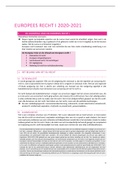Samenvatting
Samenvatting The Strategic Management of Information Systems, ISBN: 9780470034675 Strategisch Management Van Organisaties En ICT
- Instelling
- Universiteit Utrecht (UU)
Alle stof voor het tentamen van SMOI; volledig met extra aantekeningen.
[Meer zien]














